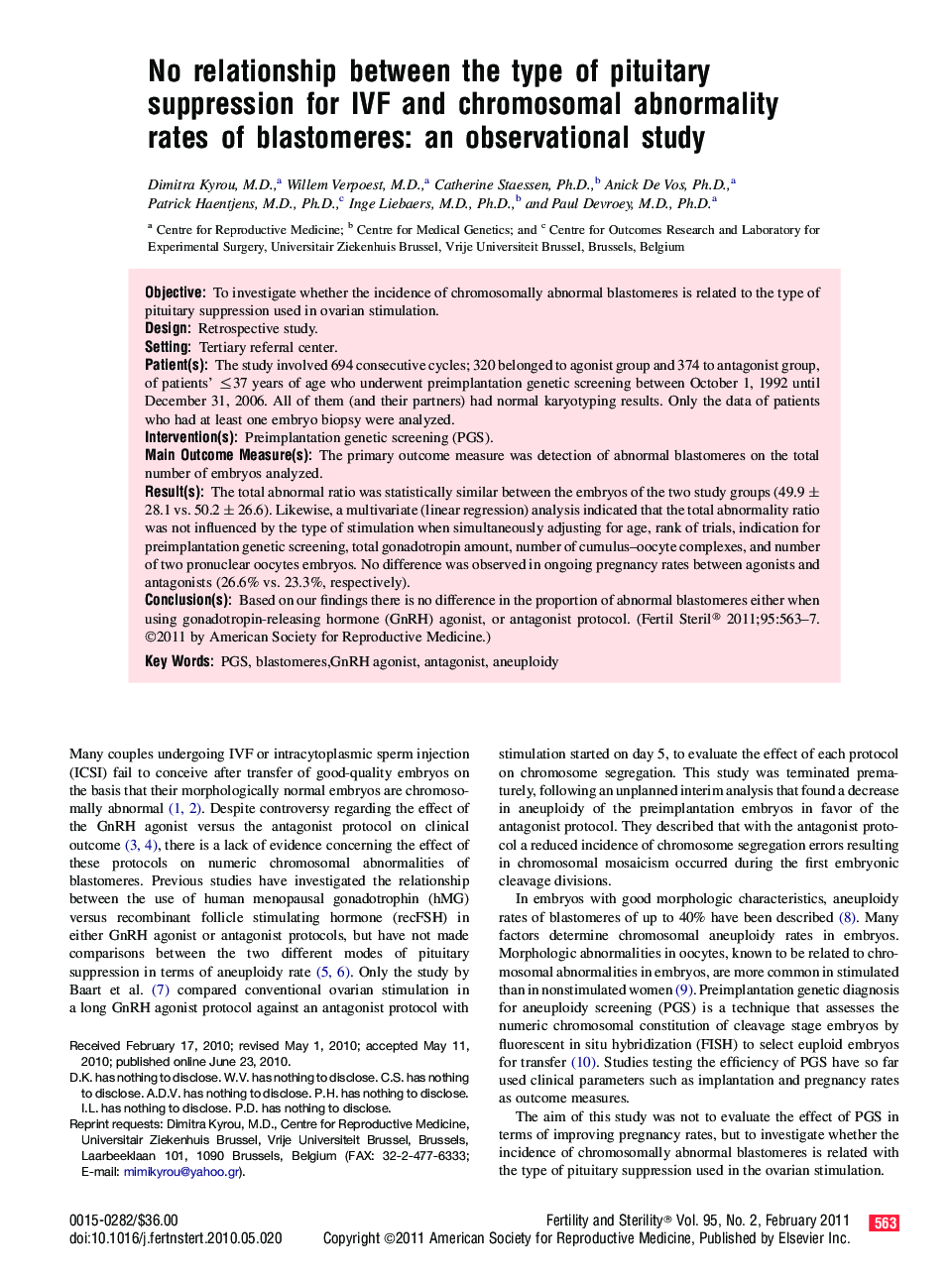| Article ID | Journal | Published Year | Pages | File Type |
|---|---|---|---|---|
| 3939542 | Fertility and Sterility | 2011 | 5 Pages |
ObjectiveTo investigate whether the incidence of chromosomally abnormal blastomeres is related to the type of pituitary suppression used in ovarian stimulation.DesignRetrospective study.SettingTertiary referral center.Patient(s)The study involved 694 consecutive cycles; 320 belonged to agonist group and 374 to antagonist group, of patients' ≤37 years of age who underwent preimplantation genetic screening between October 1, 1992 until December 31, 2006. All of them (and their partners) had normal karyotyping results. Only the data of patients who had at least one embryo biopsy were analyzed.Intervention(s)Preimplantation genetic screening (PGS).Main Outcome Measure(s)The primary outcome measure was detection of abnormal blastomeres on the total number of embryos analyzed.Result(s)The total abnormal ratio was statistically similar between the embryos of the two study groups (49.9 ± 28.1 vs. 50.2 ± 26.6). Likewise, a multivariate (linear regression) analysis indicated that the total abnormality ratio was not influenced by the type of stimulation when simultaneously adjusting for age, rank of trials, indication for preimplantation genetic screening, total gonadotropin amount, number of cumulus–oocyte complexes, and number of two pronuclear oocytes embryos. No difference was observed in ongoing pregnancy rates between agonists and antagonists (26.6% vs. 23.3%, respectively).Conclusion(s)Based on our findings there is no difference in the proportion of abnormal blastomeres either when using gonadotropin-releasing hormone (GnRH) agonist, or antagonist protocol.
